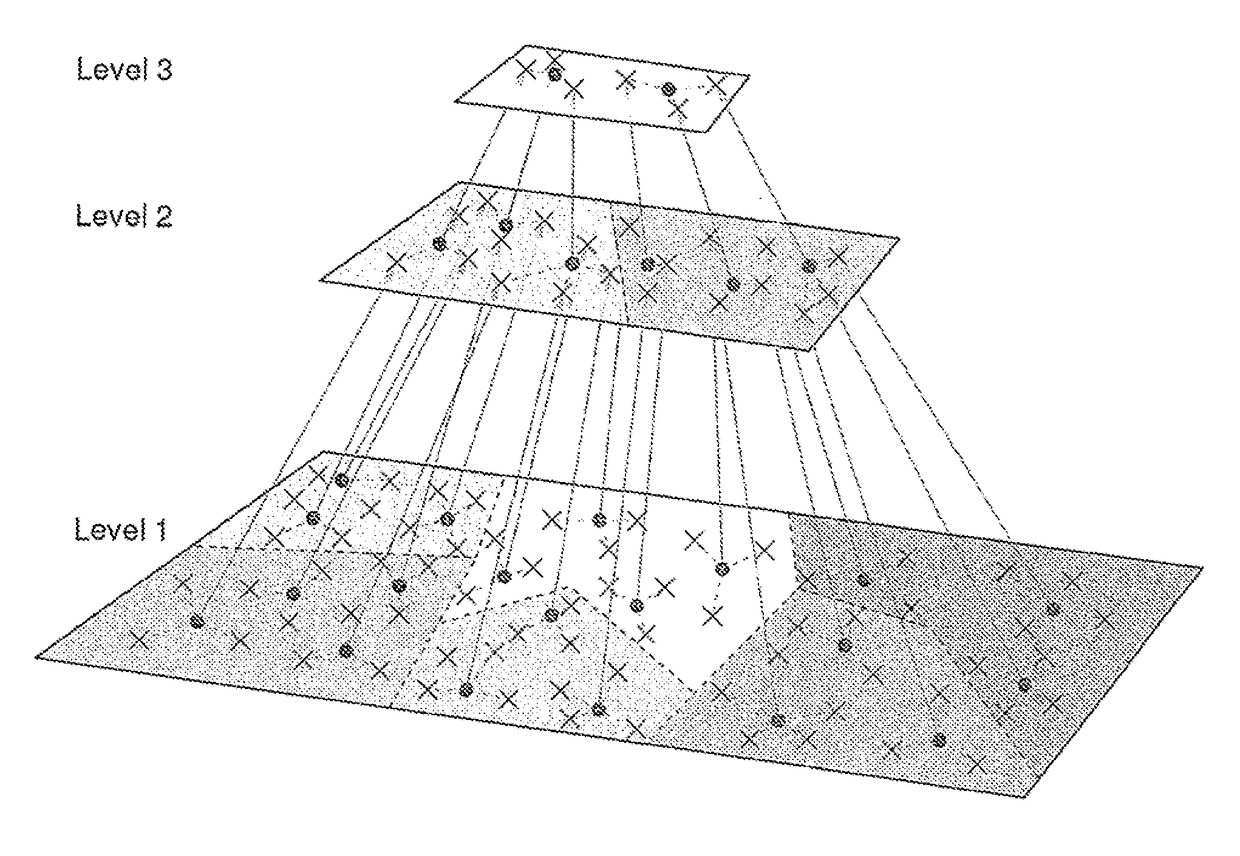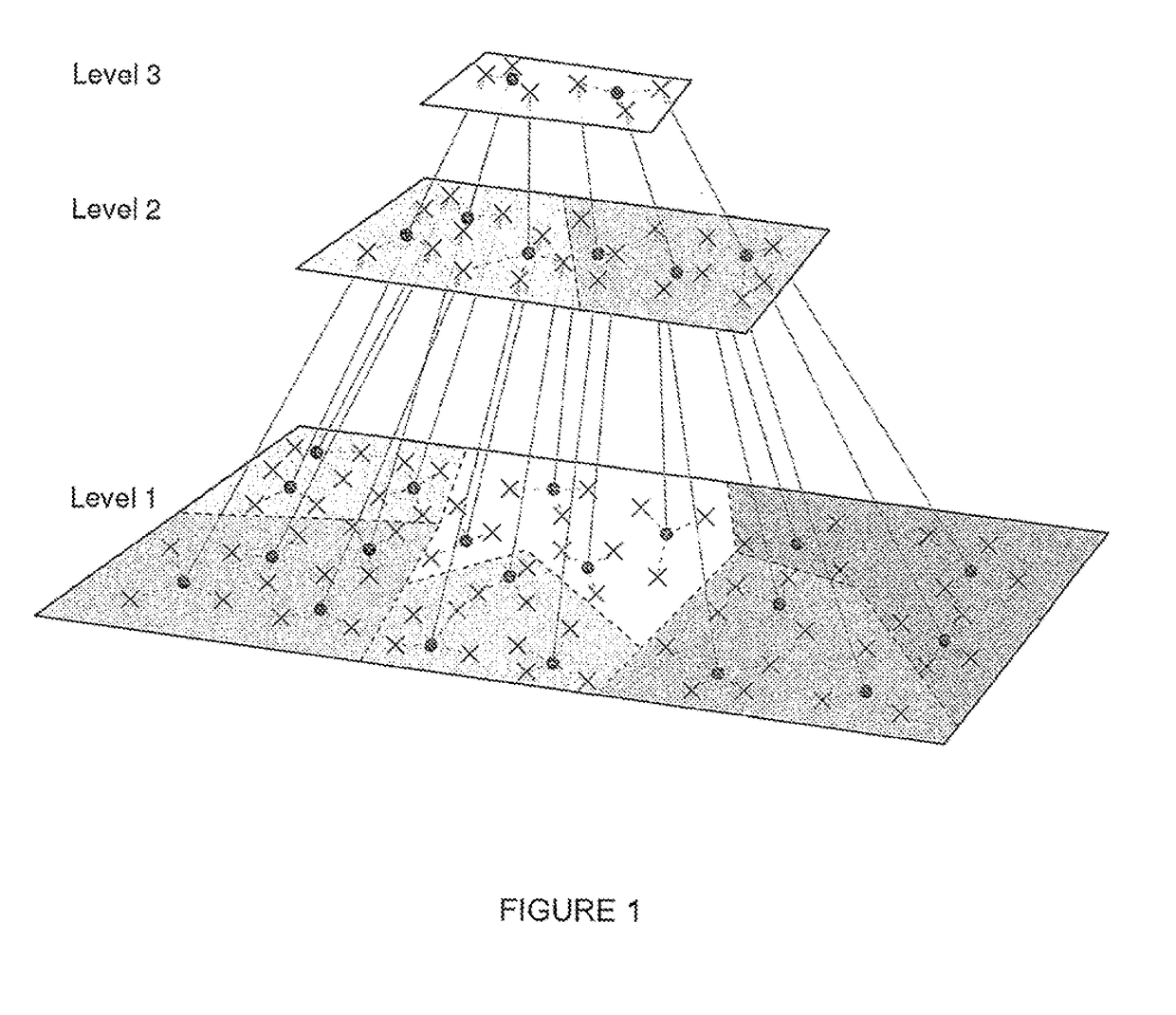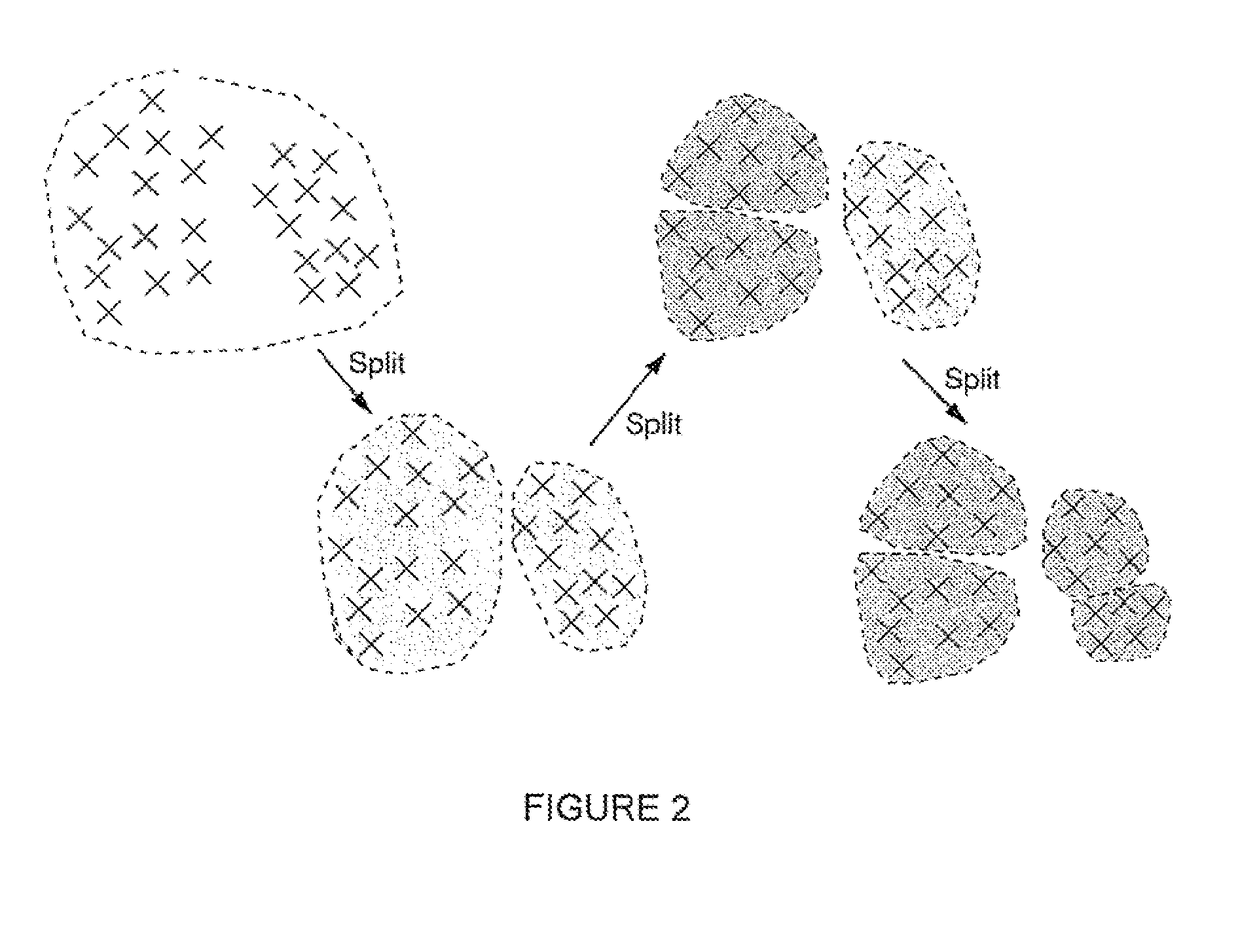Accelerated discrete distribution clustering under wasserstein distance
a discrete distribution and clustering technology, applied in relational databases, instruments, computing models, etc., can solve the problems of requiring more than a day, unable to effectively measure the distance of metrics, and the fundamental unsupervised learning methodology of clustering, so as to improve the competitiveness of ad2-clustering, improve the scalability significantly, and improve the scalability. good
- Summary
- Abstract
- Description
- Claims
- Application Information
AI Technical Summary
Benefits of technology
Problems solved by technology
Method used
Image
Examples
Embodiment Construction
[0063]Table I compares D2-clustering with several basic clustering algorithms in machine learning. D2-clustering runs on discrete distributions which K-means cannot handle. It is also more preferable over agglomerative clustering (Johnson, 1967) and spectral clustering (Ng et al., 2002) when cluster prototypes are needed. The main disadvantage of D2-clustering is the high time complexity. The parallel D2-clustering algorithm listed on the last column of the table keeps most of D2-clustering's properties with minor approximation, and improves the time complexity to a much lower order.
TABLE IComparison of Basic Clustering ApproachesK-meansAgglomerativeSpectralParallelMethodClusteringClusteringClusteringD2-ClusteringD2-ClusteringData typeVectorsAny typeAny typeDiscreteDiscretedistributionsdistributionsProvideYesNoNoYesYesprototypesBased onNoYesYesNoNopair-wisedistancesGlobalYesNoNoYesYes, withOptimizationapproximationTimeLinearQuadraticCubicPolynomialLinearithmicComplexity
Notations
[006...
PUM
 Login to View More
Login to View More Abstract
Description
Claims
Application Information
 Login to View More
Login to View More - R&D
- Intellectual Property
- Life Sciences
- Materials
- Tech Scout
- Unparalleled Data Quality
- Higher Quality Content
- 60% Fewer Hallucinations
Browse by: Latest US Patents, China's latest patents, Technical Efficacy Thesaurus, Application Domain, Technology Topic, Popular Technical Reports.
© 2025 PatSnap. All rights reserved.Legal|Privacy policy|Modern Slavery Act Transparency Statement|Sitemap|About US| Contact US: help@patsnap.com



